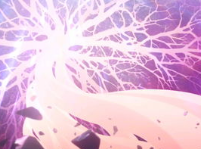- 阅读
- 阅读
- 技巧
- 百科
- 试题
- 文化
- 技能
This is Science, Quickly, a podcast from Scientific American. I’m Stefano Montali.
这里是《科学美国人》的科学快报播客。我是斯特凡诺·蒙塔利。
If I asked you to visualize, say, Harry Potter, you’d probably have no problem picturing him in your mind: a teenage wizard with black hair, glasses, a thunderbolt-shaped scar on his forehead and a wand in his hand.
如果我让你想象哈利·波特的形象,你可能会毫不费力地在脑海中描绘出他的样子: 一位十几岁的巫师,黑头发,戴着眼镜,额头有一处闪电状的伤疤,手持一根魔杖。
It would almost be as if you were pulling up a photograph in your head.
这仿佛是在脑海中调用一张照片。

Building on this research, Pearson and his team then recruited people with aphantasia from the Sydney, Australia, area to come to the lab for another experiment.
基于这项研究,皮尔森和他的团队从澳大利亚悉尼地区招募了心盲症患者,邀请他们来实验室进行另一项实验。
This time, he asked the participants to imagine a dark object and then a light one.
这一次,他要求实验者先想象一个黑暗的物体,再想象一个明亮的物体。
Your pupil contracts when you’re imagining the bright thing just like it does if I look up at the light.
当想象明亮的物体时,如同抬头看灯一样,瞳孔会收缩。
And with imagery, their pupil was different in the light condition. No imagery, with aphantasia, there’s no real difference there.
意象时的瞳孔与在光照条件下的瞳孔不同。心盲症患者没有意象,也就不会有真正的区别。
For a person to be able to volunteer for this type of experiment, they first have to realize that they have aphantasia.
自愿参加这项实验的人首先要意识到自己是心盲症患者。
But how do you know that you can’t visualize if you don’t even know that other people can?
但如果你甚至不知道其他人可以在脑海中可视化物体,那你怎么知道你不能这样呢?
Quite often, Pearson says, the epiphany takes place in a meditation class.
皮尔逊表示,这样的顿悟(意识到自己无法可视化物体)通常发生在冥想课上。
The teacher will be saying, “Now picture this and picture that.”
老师会说: “现在想象这个,想象那个。”
And they’ll be getting more and more frustrated, saying, “They keep saying that. What do they mean? I can't picture that.”
他们会越来越沮丧,说: “他们一直说想象。到底想象的是什么? 我想象不出来。”
I compare it to people discovering they’re color-blind. They just don’t know what they’re missing until someone describes, somehow, the vivid experience of color. Then they go, “Oh, wait, what?”
我将这种现象与人们发现自己是色盲的情况相比较。直到有人以某种方式描述了对颜色的生动体验,他们才知道他们缺失了什么东西。他们会说,“哦,等等,什么?”
On a brighter note, though, there are many successful, creative people that live with the condition.
不过,就好的一面来说,很多事业有成、富有创造力的人都患有这种疾病。
Pixar co-founder Ed Catmull is one.
皮克斯联合创始人埃德·卡特穆尔就是其中之一。
Glen Keane, a character animator behind films such as The Little Mermaid and Beauty and the Beast, is another.
《小美人鱼》与《美女与野兽》等电影的特色动画师格伦·基恩也是其中之一。
So is there a connection between imagery, aphantasia and creativity?
那么,意象、心盲症和创造力之间有联系吗?
I get lots of e-mails from people saying, “Oh my God, I’ve realized I have aphantasia. That's why I'm not creative.”
我收到很多人的电子邮件说,“天哪,我意识到我有心盲症。这就是我缺乏创造力的原因。”
There doesn’t seem to be any roadblocks there.
这个解释似乎没有任何问题。
In fact, we’re running a creativity study now here in Future Minds, and again, the data does not support any difference in creativity measures for those with aphantasia.
事实上,我们正在未来思维实验室进行一项关于创造力的研究,同样,得到的数据无法支持心盲症患者在创造力上存在任何差异。
So even though people tend to sort of have some intuition—they think that there should be a lack of creativity in aphantasia, the data doesn’t support that so far.
因此,即使人们往往依靠直觉,认为心盲症患者应该缺乏创造力,但是,到目前为止,数据并不支持这一观点。
Living without mental imagery might seem like a disadvantage, butPearson says there are benefits as well—especially in terms of those living with anxiety disorders such as post-traumatic stress disorder, or PTSD.
缺乏心理意象能力的生活似乎是劣势,但皮尔森表示,这也是优势——尤其是对于那些患有焦虑症(如创伤后应激障碍)的人来说。
All the data we have so far suggests that the more vivid your imagery is, the more prone you are to develop PTSD after a trauma.
到目前为止,我们掌握的所有数据都表明,想象越生动,越容易在经历创伤后患上创伤后应激障碍。
So there’s a couple of things already pointing to the fact that things around anxiety are going to be different and less so without imagery.
已经有一些研究表明了这样的事实,即焦虑会对生活产生影响,如果缺乏意象能力,影响就会少很多。
But what about good memories? Do they stick around? Pearson says yes, just in a different way.
但是美好的回忆呢? 会留下来吗? 皮尔森认为会留下,只是方式不同。
So that can take on a number of different semantics, ideas, concepts, spatial locations, emotions and sometimes different senses.
每个人对事物的含义,想法,概念,空间位置,情感体验不同,有时感觉也是如此。
So you can break aphantasia up into multisensory aphantasia—so let’s blind across all the senses—while or pure visual aphantasia.
可以把心盲症分为多感官心盲,即缺乏所有感官的想象力,或者仅为纯粹的视觉心盲。
So while people's lifelong memories have less details if they have aphantasia, they’re still there.
因此,如果人们患有心盲症,那么,他们一生记忆中的细节会比常人少些,但仍然有记忆。
It’s not catastrophic. Their memories aren’t lost.
这并非是灾难。他们的记忆并没有丢失。
Thanks for listening. For Scientific American’s Science, Quickly, I’m Stefano Montali.
谢谢大家收听科学美国人的科学快报。我是斯特凡诺·蒙塔利。
来源:可可英语
参与评论